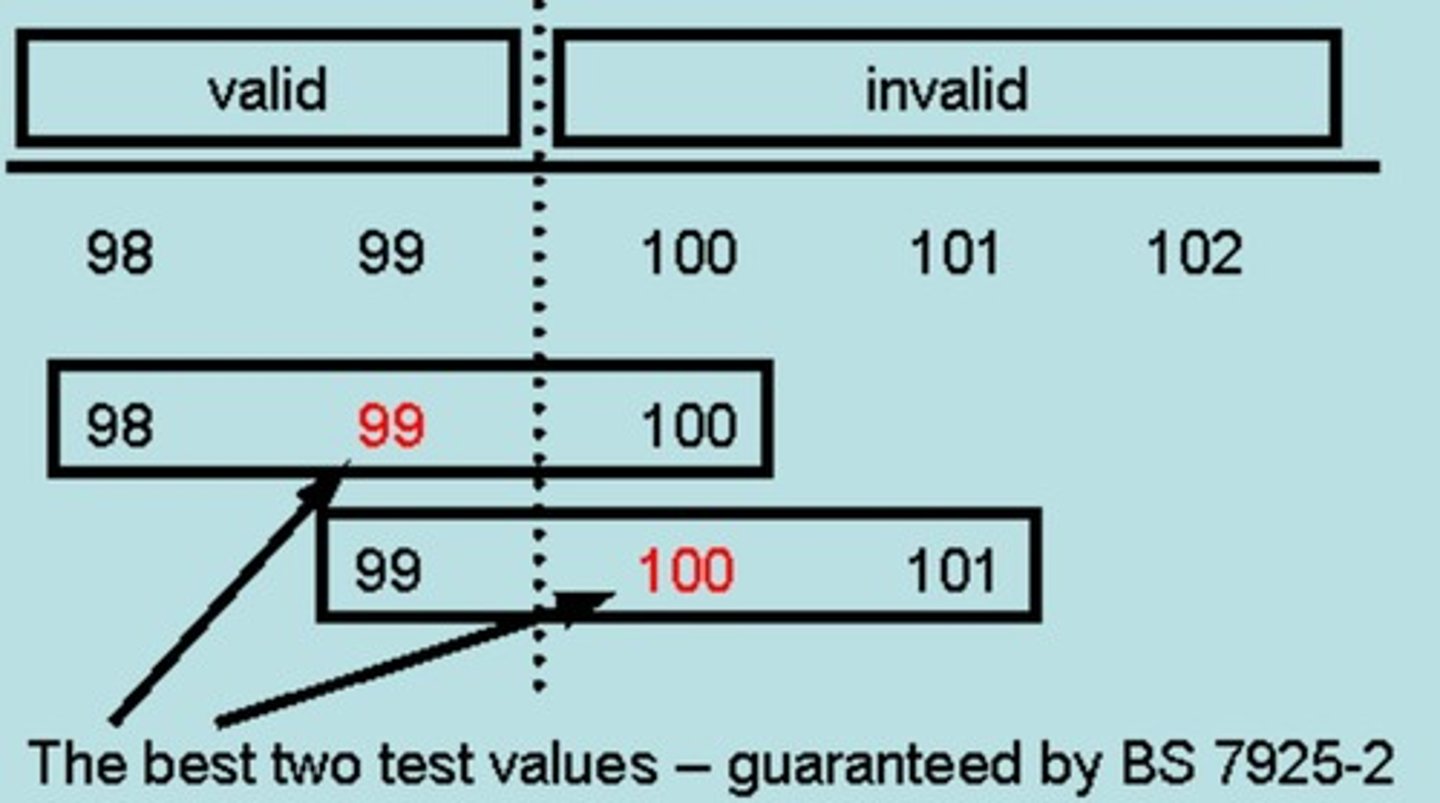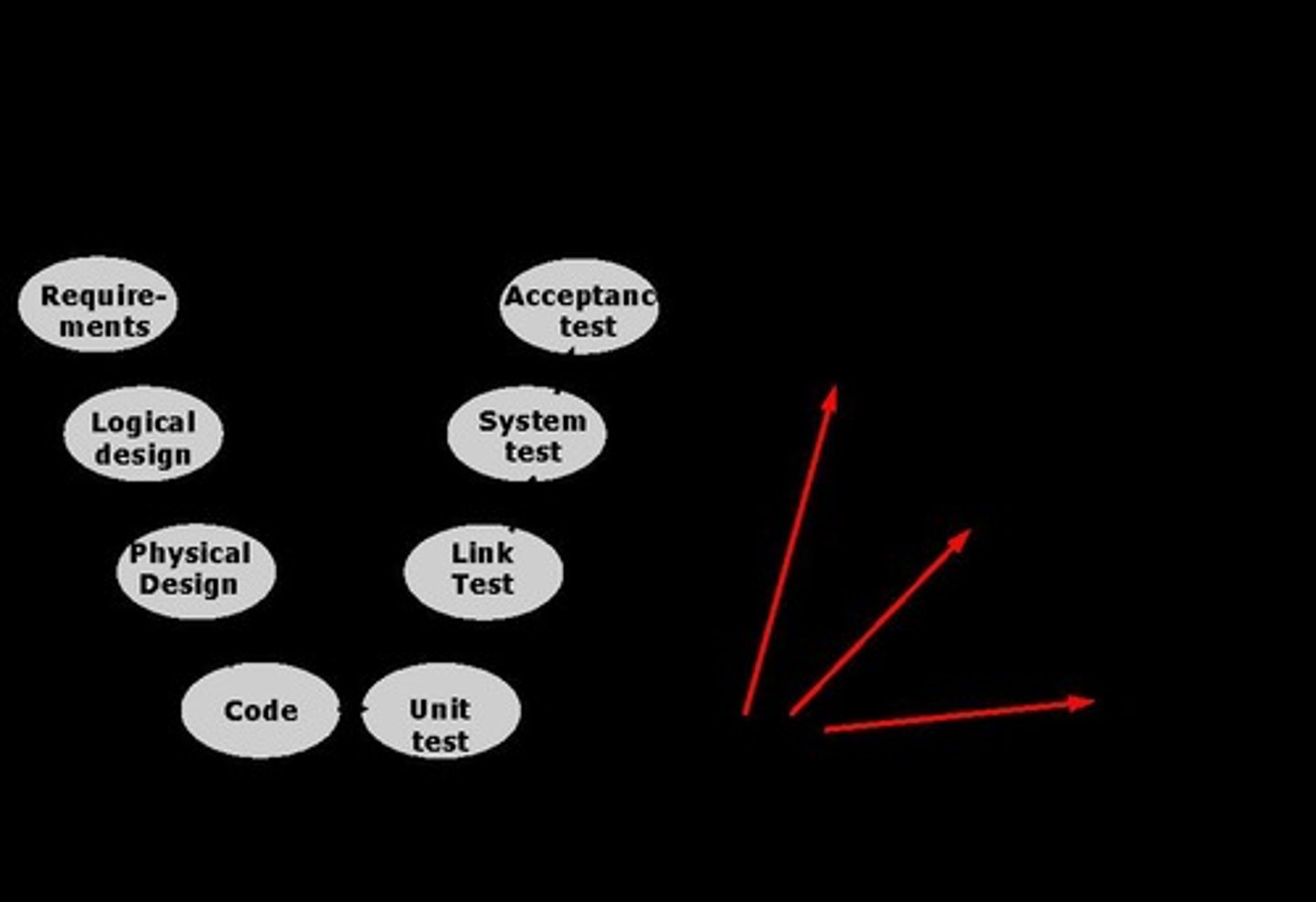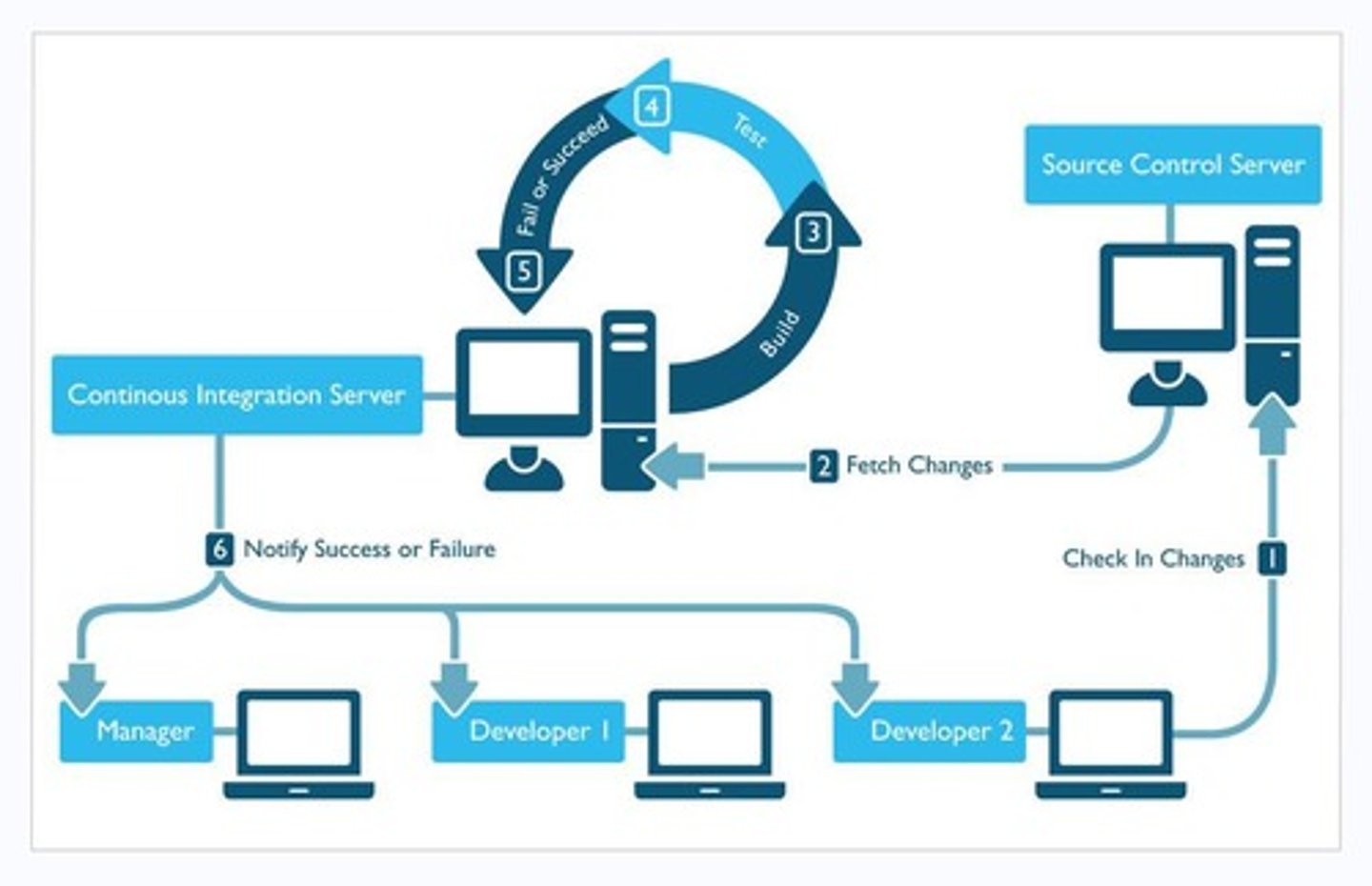Software Testing CA2
1/235
There's no tags or description
Looks like no tags are added yet.
Name | Mastery | Learn | Test | Matching | Spaced |
|---|
No study sessions yet.
236 Terms
External Specifications
Define software requirements and expected behaviors.
Agile Development
Uses user stories for requirements instead of detailed specs.
Baseline Document
Describes expected system behavior for comparison.
Testing Oracle
Source to determine expected results for tests.
Expected Results
Defined outcomes before executing tests.
Exit Criteria
Triggers to confirm testing completion.
Coverage Achieved
Percentage of requirements tested, typically 80%.
Unit Testing
Testing individual components for correctness.
Integration Testing
Testing combined components for interaction issues.
System Testing
Testing the complete system for compliance.
Test Planning
Process of defining testing strategy and scope.
Test Case Generation
Creating specific scenarios to validate requirements.
User Stories
Informal descriptions of software features from user perspective.
Refactoring
Improving code without changing its external behavior.
Component Testing
Testing individual parts of a system in isolation.
Testers' Role
Identify tests needed and compare results with requirements.
Requirements Comparison
Assessing actual results against defined specifications.
Plausible Result
Erroneous result perceived as correct due to bias.
Critical Business Scenarios
Key functionalities that must be tested thoroughly.
Outstanding Incidents
Unresolved issues that may affect testing outcomes.
Test
Controlled exercise with defined inputs and outputs.
Expected Results
Derived from baseline; compares with actual results.
Actual Result
Outcome obtained from executing a test.
Test Process
Main activities include planning, execution, and closure.
Test Planning
Determines strategy implementation and test scope.
Test Control
Measures results and monitors testing progress.
Test Analysis
Derives test conditions from baseline documents.
Test Design
Sets up test environment and prepares test cases.
Test Implementation
Transforms conditions into test cases and data.
Test Execution
Runs tests and records actual results.
Incident Reports
Documents test failures for analysis and action.
Regression Testing
Re-testing to ensure previous functionality remains intact.
Exit Criteria
Conditions to assess completion of testing activities.
Test Closure Activities
Final report and review after testing phase.
Test Inventory
List of features and test cases to be executed.
Test Case Prioritization
Ranking test cases based on importance or risk.
Testware
Tools and resources used for testing activities.
Test Coverage
Extent to which testing addresses requirements.
Baseline Documents
Original documents used as reference for testing.
Pre-flight Checks
Initial checks before executing test cases.
Test Scripts
Detailed instructions for executing test cases.
Test Data
Specific data used during test execution.
Corrective Actions
Steps taken to address identified issues.
Post Implementation Reviews
Evaluations to learn from testing outcomes.
Defect Presence
Testing indicates defects exist, not absence.
Exhaustive Testing
Testing all paths and inputs is impractical.
Effective Testing
Select tests that efficiently find faults.
Early Testing
Start testing early in development cycle.
Defect Clustering
Few modules contain most pre-release defects.
Pesticide Paradox
Repeated tests stop finding new defects.
Context-Dependent Testing
Testing varies by software context and risk.
Absence-of-Errors Fallacy
Good tests don't guarantee user satisfaction.
Testing Goal
Find defects before customers discover them.
Test Understanding
Know the purpose behind each test.
Test Corrections
Fixes may introduce unintended side effects.
Defect Convoys
Defects often occur in clusters.
Defect Prevention
Testing includes preventing defects, not just finding.
Automation in Testing
Well-planned automation enhances testing benefits.
Team Commitment
Successful testing requires dedicated, skilled teams.
Risk Focus
Prioritize testing based on risk assessment.
Testing Objectives
Focus testing on defined, clear objectives.
Operational Failures
Modules with defects often show operational issues.
Testing Efficiency
Balance effectiveness and efficiency in testing.
Faulty Requirements
Defects arise from specifications not meeting user needs.
Test Design Techniques
Methods to identify test conditions and cases.
Equivalence Class Partitioning
Dividing inputs into groups treated equivalently.

Boundary Value Analysis
Testing at the edges of equivalence partitions.
Specification Based Techniques
Testing methods based on software specifications.
Exhaustive Testing
Testing all possible inputs and paths impractically.
Valid Partitions
Input ranges expected to be accepted by the system.
Invalid Partitions
Input ranges not expected by the system.
Test Case Strategy
Method to derive test cases from equivalence classes.
Equivalence Class
Group of inputs treated the same by the system.
Test Coverage
Extent to which test cases cover requirements.
Unique Identifier
Label assigned to each equivalence class.
Error Message Handling
System response to invalid input partitions.
Precision in Testing
Importance of exact values in specific domains.
Boundary Cases
Values just above, below, and on the boundary.
BS5925-2
Standard for boundary value analysis techniques.

Equivalence Partitioning Example
Identifying valid and invalid input ranges.
Default Condition
Assumed value when no input is supplied.
Empty Condition
Value exists but contains no content.
Blank Condition
Value exists with content but is whitespace.
Null Condition
Value does not exist or is unallocated.
Zero Condition
Numeric value of zero in input.
None Condition
No selection made from a list.
Fault Detection
Identifying errors through strategic test cases.
Subjective Boundary Selection
Choosing boundaries can vary based on interpretation.
Test Case Annotation
Documenting equivalence class identifiers for test cases.
Brute-force Testing
Testing every combination of inputs impractically.
Software Process
Methodology for producing software products.
Software life-cycle model
Framework for managing software development phases.
Software Development Life Cycle (SDLC)
Phases involved in software development.

Build-and-fix model
Ad-hoc approach without specifications or design.
Waterfall model
Sequential phases where each phase is signed-off.
Iterative development models
Repeated cycles of requirements, design, and testing.
Incremental Model
Gradually adds functionality to a system.
V-Model
Verification and validation model for software testing.
Continuous Software Engineering (CSE)
Integration of continuous processes in software development.

Regression testing
Testing existing functionality after changes.